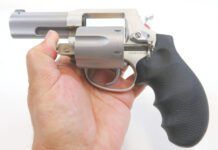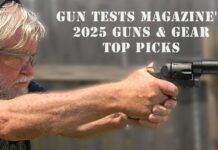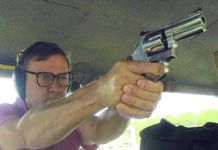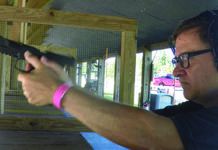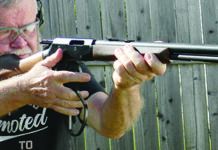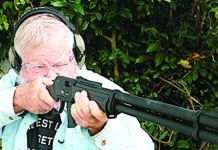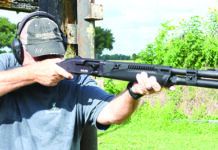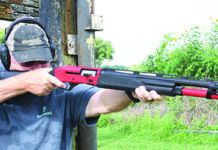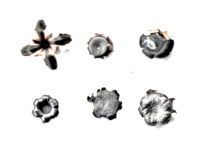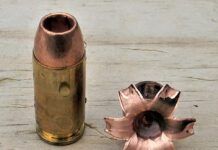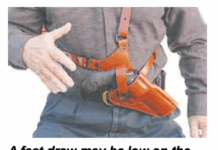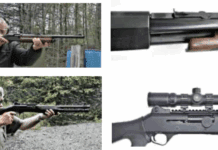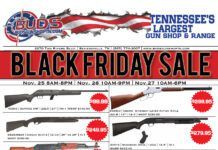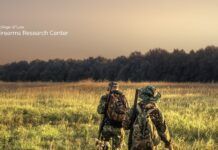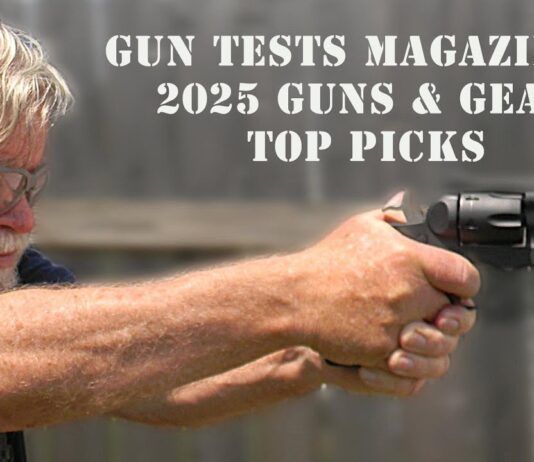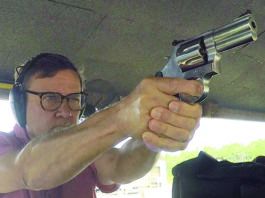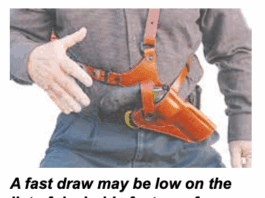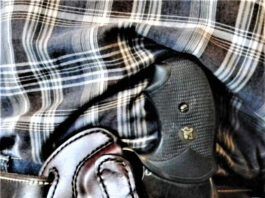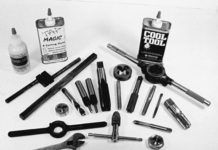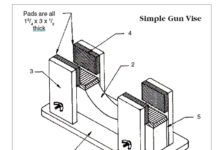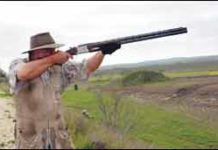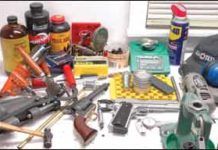How to Tap and Die-Cut Barrel Threads
I wouldn't stake my life on threaded devices being with us from now on, but I submit that no one has shown us anything that even comes close to replacing them. After all, a screw is just a wedge around an axis and is incredibly efficient.
Galco unholsters Facebook page
Employing Precision Measuring Instruments
Gun Vises for Almost Nothing, with Complete Dimensions
Every gunsmith needs a good vise, but not everyone has the money to buy one. Here are two you can build yourself, with updated dimensions for components.
Crimson Trace Releases Pink Molded Laser Sights For S&W J-Frame and Ruger LCP
GunReports.com Video: Details of the 24-7 Series Weathershield Windbreaker
GunReports.com Video: Interview with Josh Waldron, CEO Silencerco
Cali May Move to Ban Bullet Button
Rebates Offered for Redfield Revolution Riflescopes, Rebel Binoculars
Interchangeable Choke Tubes: We Pattern Seven Head to Head
Interchangeable choke tubes have been a feature for smokepole enthusiasts since Winchester Firearms created the system in 1959. The first experiment ended in 1965 because of functioning problems, but the Winchoke system introduced in 1970 took hold and is considered the grandfather of choke development. Today, it is hard to find a shotgun that does not feature some kind of interchangeable choke system.
Perhaps a little trip back to the physics classroom is necessary at this time. For those who still remember the days of Shotgun Chokes and Ballistics 101, we request a little indulgence.
When the powder charge sends the shot column down the barrel, it reaches the choke and is forced to squeeze together before exiting the muzzle. That constriction is called radial force. As the shot column leaves the barrel, gravity and wind resistance immediately take over and attempt to force the pellets inside the column to spin and flare off. The tighter the pellets are squeezed together by radial force inside the choke, the more the pellets hold together over a longer distance and produce a tighter pattern.
Constriction of the chokes is measured in thousandths of an inch and, in general, breaks down to the following measurements that are subtracted from the bore diameter of the barrel: Cylinder, .000; Skeet, .005; Improved Cylinder, .010; Modified, .020; Improved Modified, .030; Full, .040.
For example, in our patterning and handling tests, we selected a Browning Model XS Citori 12-gauge over and under with 32-inch barrels that was reviewed in previous editions of Gun Tests. The interchangeable chokes from the various manufacturers were all designed to fit the Browning. We checked the bore measurement of the XS with a bore gauge and the reading was .740. The constriction of all the choke tubes was subtracted from that figure to determine their bore diameter.
One more part of the classroom review states that in most cases the improvement in the pattern on a target at 30 yards over the widest pellet spread with a cylinder choke is about 10-13 percent with skeet; 15-17 percent with improved cylinder; 25-27 percent with modified; 30-33 percent with improved modified; and about 35 percent with a full choke. Students can now close their books.
It should be noted in reading through our test that performance results will vary depending upon individual shotguns and some shooters make their choke selection based on tube qualities other than patterning, such as ease of use; weight; and even appearance.
All of these individual factors are a matter of personal preference and help drive the quest to find the right combination of choke tube length and constriction that produces the optimum pattern performance. As one smoke-pole veteran said: "Whatever works for you, works for you — Don't mess with something that works."
In our test, we examined the results using both an improved cylinder and modified choke. The ammunition used was Winchester AA Xtra-Lite 2.75 inch Target Loads with one ounce of No. 71/2 shot and 2.75 dram equivalent of powder producing an average 1180 fps muzzle velocity.
All of the chokes in the test were fired at a 30-inch circle on a paper target placed 30 yards downrange. We noted that there was very little deviation in the overall pattern of pellet strikes on the paper, with all the chokes tending to produce slightly more strikes on the left side of the circle rather than on the right. This result probably is a factor of gun fit for the shooters, rather than choke fit in the barrel.
We also tested all the chokes on clay target presentations on a couple of different sporting clays ranges. While target breaks can vary according to the skills of the shooter more than because of the effectiveness of the chokes, we also used the "feel-good" factor to judge how well the tubes worked on clays in our evaluation.


